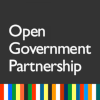Prioritize Administrative Burden Reductions through the Paperwork Reduction Act (US0127)
Overview
At-a-Glance
Action Plan: United States Action Plan 2022-2024 (December)
Action Plan Cycle: 2022
Status:
Institutions
Lead Institution:
Support Institution(s):
Policy Areas
InclusionIRM Review
IRM Report: United States Action Plan Review 2022–2024
Early Results: Pending IRM Review
Design i
Verifiable: Yes
Relevant to OGP Values: Yes
Ambition (see definition): Low
Implementation i
Completion: Pending IRM Review
Description
In April 2022, the Office of Management and Budget released a memorandum to the heads of all Federal agencies reminding them of their responsibility under the Paperwork Reduction Act (Public Law 104–13) to reduce the burdens faced by the public in accessing Government benefits and services, with a focus on reducing burdens faced by members of underserved communities. The memorandum calls on agencies to comprehensively and transparently assess the burdens faced by applicants to benefits and services, taking into account not just the time and resources required to complete necessary paperwork, but also the costs individuals may expend in learning about public programs 11 as well as the psychological costs individuals may experience through their interactions with the government. Agencies should then use these assessments of costs to inform burden reduction strategies, paying close attention to programs that involve benefits and services for underserved communities. Over the coming year, the Office of Management and Budget commits to supporting Federal agencies in both of these steps, including by developing and sharing burden assessment and reduction tools and resources with Federal agencies and through the review of paperwork requests under the Paperwork Reduction Act. The Administration also commits to applying a bur- den-reducing lens to implementation of major initiatives, as it did with the implementation of the application for student loan debt relief launched in October 2022. The Administration will engage with civil society to identify high-priority programs to target for administrative burden reduction efforts, including engagement through the U.S. Department of Justice’s Legal Aid Interagency Roundtable, as further outlined in the Equal Justice Under the Law section below. These efforts will also be informed by analyses of disaggregated data on participation in programs and services, consistent with the recommendations of the Equitable Data Working Group and Execu- tive Order 13985.
IRM Midterm Status Summary
Action Plan Review
Commitment 15. Reduction of administrative burdens
